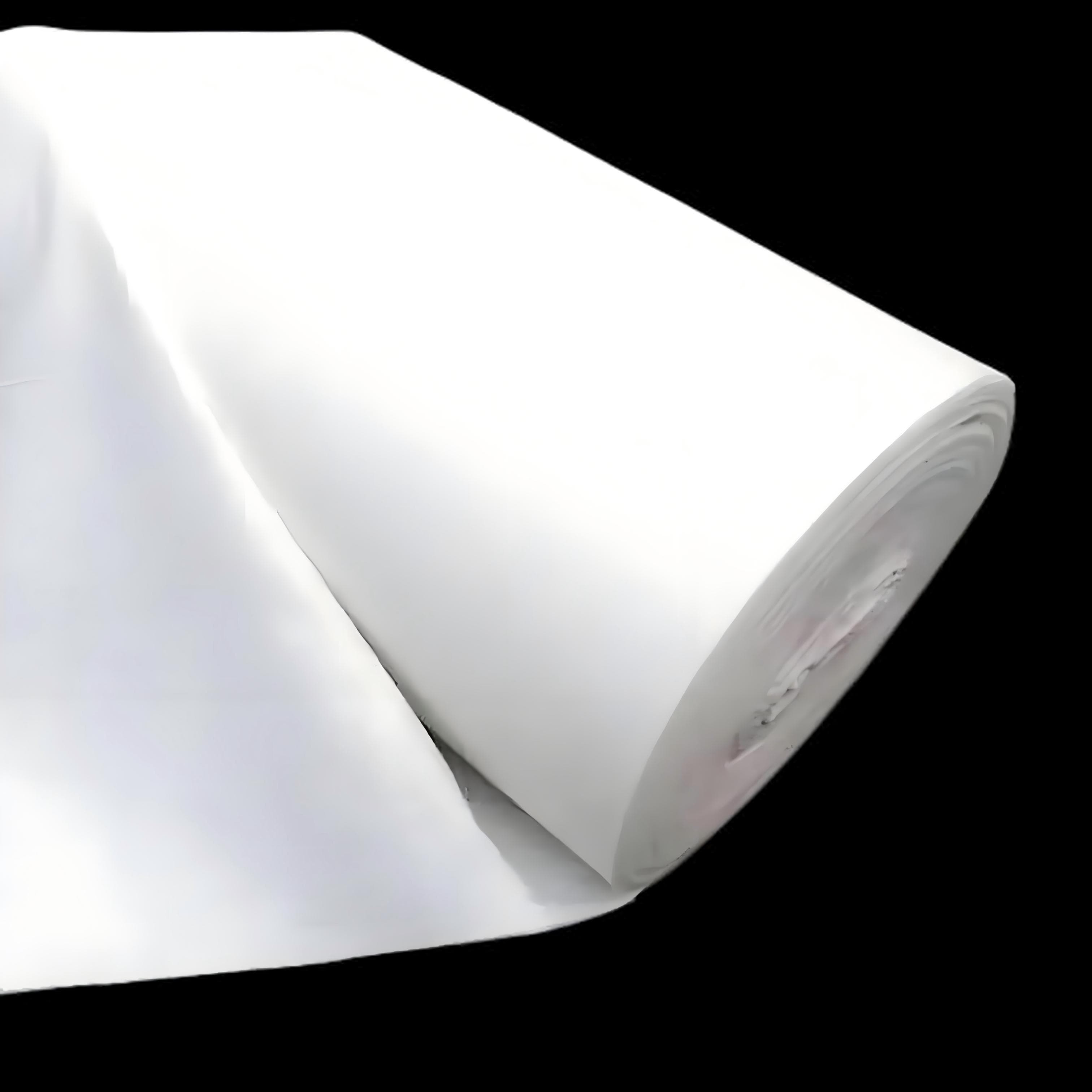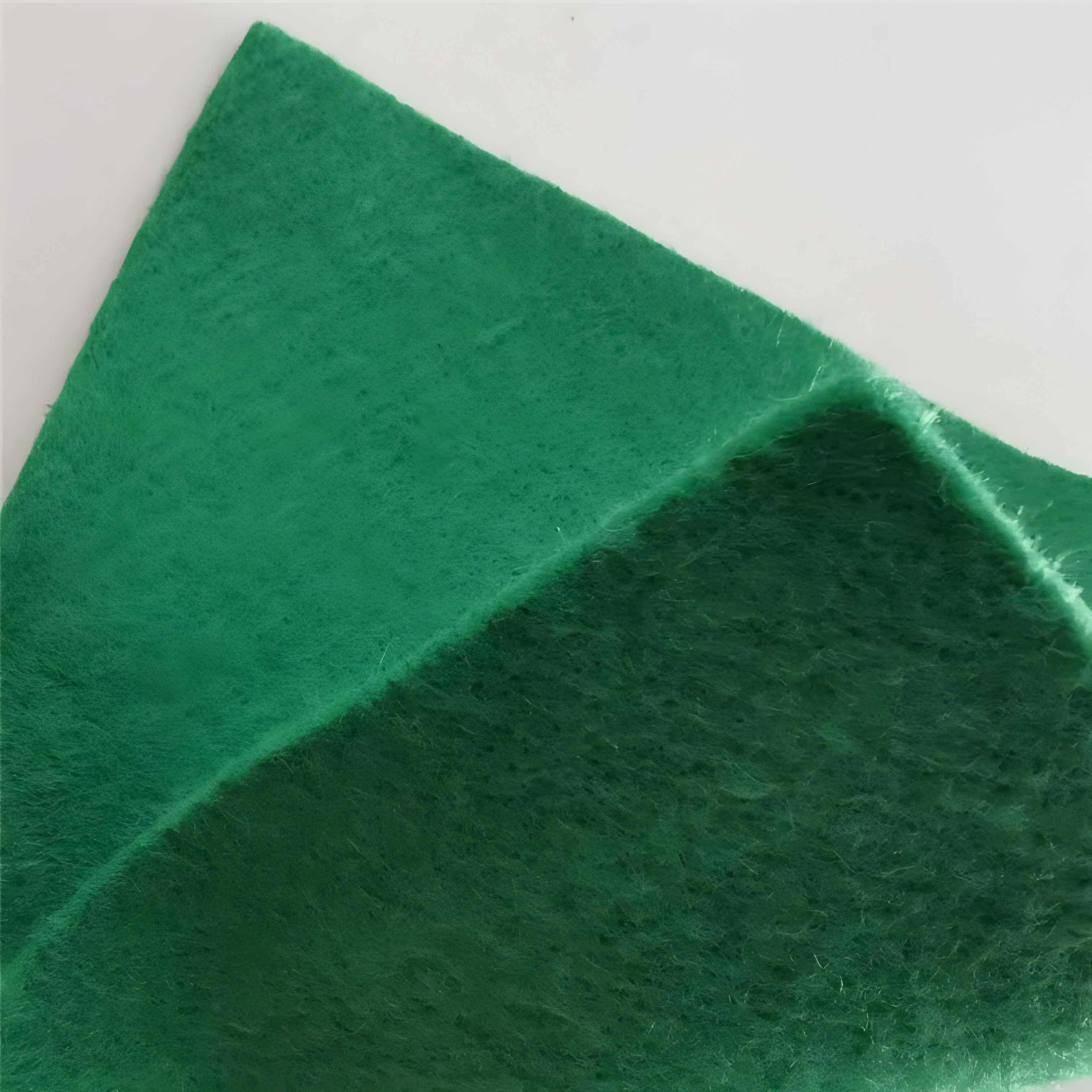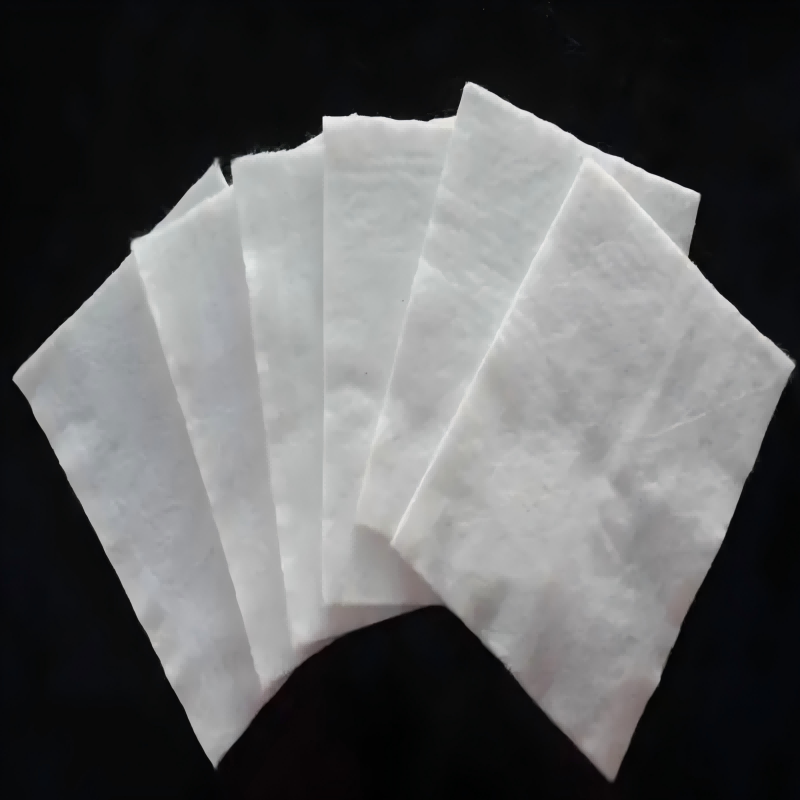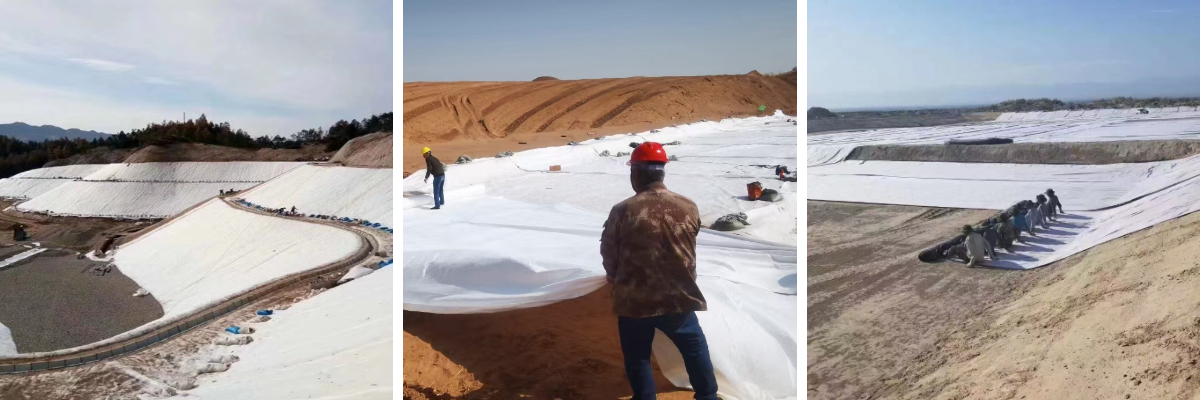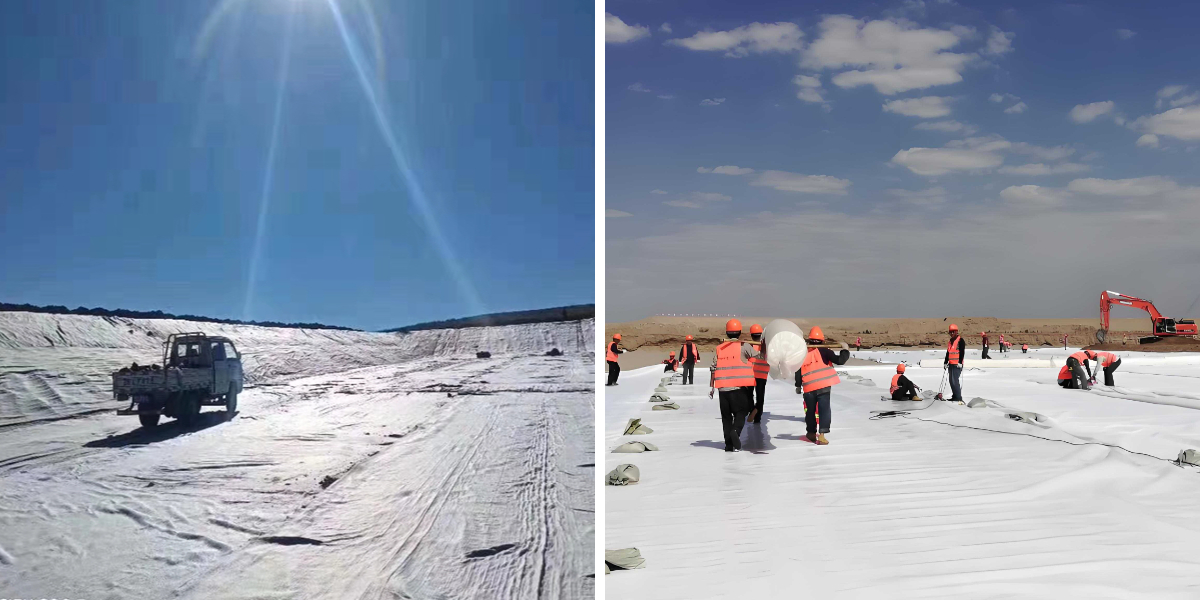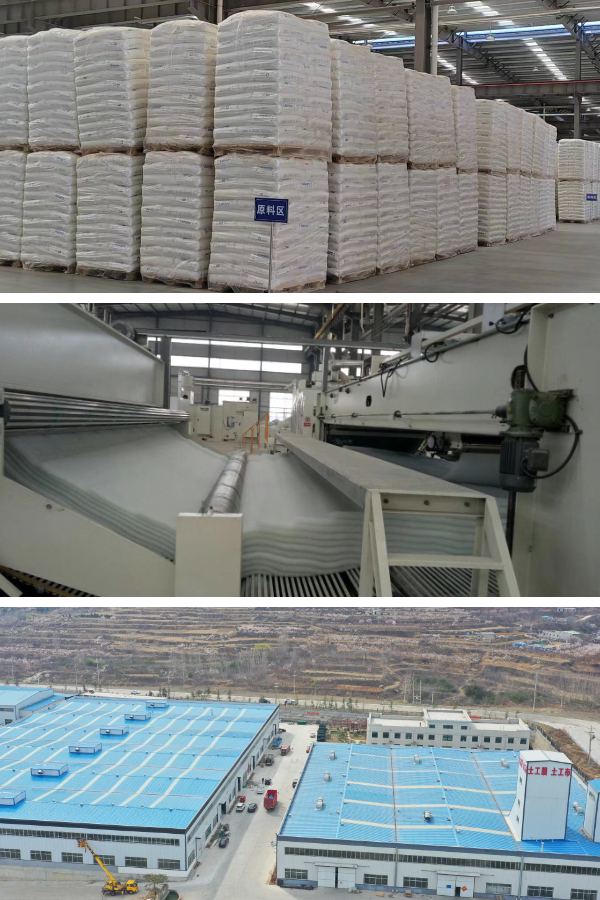Geotextile Fabric for Soil Stabilization
1. Strengthening soil structure: It can effectively disperse soil pressure, reduce settlement and displacement, and significantly improve foundation stability, especially suitable for reinforcing engineering foundations such as roads and dams.
2. Corrosion and aging resistance: Made of high polymer materials that are resistant to acid and alkali, and UV rays, it can maintain its performance for a long time in various harsh soil environments, extending the service life of the project.
3. Efficient and convenient construction: The material is lightweight and flexible, with simple and fast cutting and laying, able to adapt to complex terrain, greatly shorten the construction period, and reduce labor costs.
4. Dual advantages of permeability and soil conservation: allowing normal water infiltration, avoiding structural damage caused by soil water accumulation, while preventing the loss of fine particles and maintaining the integrity of the original soil structure.
Products Introduction:
Geotextile Fabric for Soil Stabilization is a polymer synthetic material designed specifically for soil stabilization engineering, made through advanced weaving or non-woven processes. It combines high strength, flexibility, and chemical stability, and can form effective mechanical support and protective barriers in soil structures. It is widely used in various civil engineering projects, providing reliable solutions for soil reinforcement, protection, and improvement. Its core function is to achieve long-term stability of soil structure by optimizing soil stress state, controlling water migration, and preventing particle loss.
Product Features:
1. Excellent mechanical performance: With high tensile strength and tear strength, it can effectively disperse the load on the soil, reduce foundation settlement and deformation, enhance the overall bearing capacity of the soil, and provide a solid foundation for engineering structures.
2. Excellent environmental resistance: Made of high polymer materials that are resistant to acid and alkali, UV rays, and biological erosion, it can maintain stable performance for a long time in complex soil conditions such as saline alkali land, humid environment, high temperature or severe cold, and is not easily aged or degraded, greatly extending the service life of the project.
3. Efficient hydraulic characteristics: With good permeability, it can allow the normal infiltration and discharge of water in the soil, avoiding soil softening caused by water accumulation; At the same time, it can intercept fine soil particles, prevent soil erosion, and maintain the integrity of soil structure.
4. Flexible and convenient construction: The material is lightweight and flexible, and can be flexibly cut according to engineering needs to adapt to the laying requirements of various complex terrains (such as slopes, curved surfaces, etc.). The laying process is simple and efficient, which can significantly shorten the construction period and reduce labor and machinery costs.
5. Economic durability: Compared to traditional soil reinforcement materials such as steel bars and concrete, the initial procurement and construction costs are lower, and there is less maintenance demand in the later stage. Long term use does not require frequent replacement, with high comprehensive cost-effectiveness, which can save a lot of costs for the project.
Product Parameters:
project | metric | ||||||||||
Nominal strength/(kN/m) | |||||||||||
6 | 9 | 12 | 18 | 24 | 30 | 36 | 48 | 54 | |||
1 | Longitudinal and transverse tensile strength / (kN/m) ≥ | 6 | 9 | 12 | 18 | 24 | 30 | 36 | 48 | 54 | |
2 | Maximum elongation at maximum load in longitudinal and transverse directions/% | 30~80 | |||||||||
3 | CBR top penetration strength /kN ≥ | 0.9 | 1.6 | 1.9 | 2.9 | 3.9 | 5.3 | 6.4 | 7.9 | 8.5 | |
4 | Longitudinal and transverse tearing strength /kN | 0.15 | 0.22 | 0.29 | 0.43 | 0.57 | 0.71 | 0.83 | 1.1 | 1.25 | |
5 | Equivalent aperture O.90(O95)/mm | 0.05~0.30 | |||||||||
6 | Vertical permeability coefficient/(cm/s) | K× (10-¹~10-), where K=1.0~9.9 | |||||||||
7 | Width deviation rate /% ≥ | -0.5 | |||||||||
8 | Unit area mass deviation rate /% ≥ | -5 | |||||||||
9 | Thickness deviation rate /% ≥ | -10 | |||||||||
10 | Thickness coefficient of variation (CV)/% ≤ | 10 | |||||||||
11 | Dynamic perforation | Puncture hole diameter/mm ≤ | 37 | 33 | 27 | 20 | 17 | 14 | 11 | 9 | 7 |
12 | Longitudinal and transverse fracture strength (grab method)/kN ≥ | 0.3 | 0.5 | 0.7 | 1.1 | 1.4 | 1.9 | 2.4 | 3 | 3.5 | |
13 | Ultraviolet resistance (Xenon arc lamp method) | Longitudinal and transverse strength retention rate% ≥ | 70 | ||||||||
14 | Ultraviolet resistance (fluorescence UV lamp method) | Longitudinal and transverse strength retention rate% ≥ | 80 | ||||||||
Product Applications:
1. Road engineering: commonly used for roadbed reinforcement of highways and railways, which can disperse road surface loads, reduce roadbed settlement, and prevent road surface cracking; At the same time, an isolation layer is formed between the pavement base and the sub base to avoid mixing of particles from different soil layers and improve the stability of the road structure.
2. Water conservancy engineering: It can be used for anti-seepage reinforcement and slope protection in dam, channel, and river regulation. It can not only enhance the anti sliding stability of the embankment slope, but also discharge the seepage of the dam body through its permeability characteristics, prevent dangerous situations such as piping, and protect the safety of water conservancy facilities.
3. Geotechnical engineering: suitable for soil stability in slope support and excavation of foundation pits, by laying geotextiles to enhance the shear strength of slope soil and prevent landslides and collapses; In landfill engineering, it can serve as an isolation layer and protective layer to prevent the infiltration and diffusion of pollutants.
4. Agriculture and ecological engineering: used in agricultural water conservancy and soil and water conservation projects to control soil erosion, improve soil structure, and enhance land use efficiency; In ecological restoration projects, it can assist vegetation growth and restore soil ecological functions.
Geotextile Fabric, as an efficient soil stabilization material, plays a key role in various fields such as roads, water conservancy, geotechnical engineering, agriculture, etc. due to its excellent mechanical support, resistance to environmental erosion, hydraulic control, and convenient construction. It can not only significantly improve the stability and durability of soil structure, reduce engineering risks, but also provide sustainable solutions for various types of projects through affordable cost advantages. Geotextile Fabric is an ideal choice for achieving soil stability and ensuring engineering quality, whether it is a large-scale infrastructure project or a small-scale soil improvement project.


